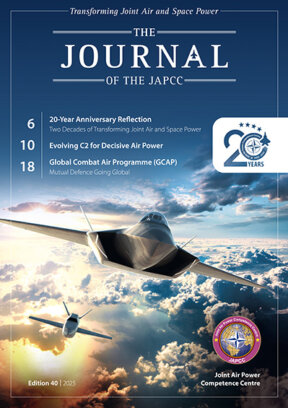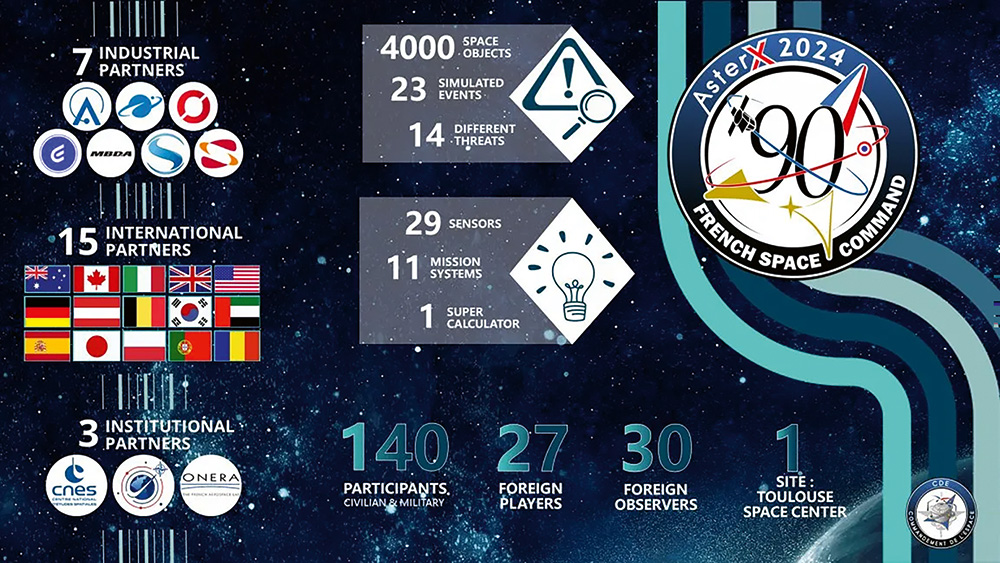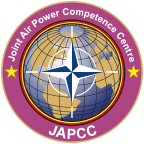Introduction
Following NATO’s 2019 declaration of space as an operational domain, many Allies have advanced their national military space programmes and integrated these capabilities into their Alliance contributions. Space differs significantly from terrestrial domains, which have established doctrines and deep operational experience. Instead, it is characterized by rapid technological evolution, prevalent dual-use technologies, a growing reliance on commercial vendors, and an evolving, often ambiguous, legal framework. Furthermore, with key NATO organizations like the Space Centre of Excellence (COE) and Combined Force Space Component Command (CFSpCC) still maturing and Tactics, Techniques, and Procedures (TTPs) in constant evolution, the Alliance operates in a domain where doctrine is being written in real-time.
Operations in this domain are not conducted independently, but in support of all others, with effects generated by operators who are physically separated from both the battlefield and the orbiting assets they control. This dynamic environment, combined with inconsistent organizational structures–where some nations have dedicated military space commands while others integrate professionals into traditional air force structures–highlights a pressing challenge: cultivating a new generation of military leaders. The choices these leaders make will be paramount, often occurring with incomplete information and under immense pressure. To prevail in these complex conditions, NATO’s space leaders must be deliberately trained through a new paradigm focused on cognitive agility, innovation, and resilience to master the ultimate high ground.
Multinational exercises like France’s AsterX, aim to foster innovation, cooperation, and interoperability alongside industry partners in the space domain. © Ministère des Armées (@Armees_Gouv)/X
The Three Pillars of Modern Space Leadership
The evolving character of warfare requires military leaders to be competent across multiple domains, with adaptability in complex environments. Because space is uniquely intertwined with other domains, leadership becomes a ‘complex, multipath process’ rather than the ‘single, top-down construct’ most domains are accustomed to.1 This necessitates a leadership development paradigm tailored to the distinct demands of NATO’s space missions, focusing on three pillars.
The first pillar is cognitive agility, the capacity to rapidly analyse complex, often incomplete, space situational awareness data; to mentally flex and adapt plans in response to dynamic threats; and to make sound, timely decisions under pressure amid ambiguous rules of engagement. The complexity of the space environment needs to be cultivated in leaders to balance this risk of uncertainty with the responsibility of command. This requires leaders who can think critically, anticipate second- and third-order effects, and comfortably navigate uncertainty.
Next, this agile mindset must be paired with a drive for innovation, the need for creative solutions inherent to progress in a developing field. It means fostering and implementing novel operational concepts, integrating inventive technological applications (often from commercial partners), and championing process improvements to enhance NATO’s space capabilities. As leadership is the lynchpin guiding organizations through change, commanders must encourage creative problem-solving without fear of failure, recognizing that the consequences of inaction often outweigh those of action.2
Finally, underpinning both agility and innovation is resilience, the foundation for sustained operations in a demanding, contested domain. It is the capacity to maintain leadership, team cohesion, and mission focus during and after disruptions to space capabilities, whether from adversary action, technical malfunction, or environmental factors. Resilient leaders foster an environment where subordinates persevere through ambiguity, adapt to changing circumstances, and bounce back from adversity. This involves building trust, managing stress effectively, and possessing a keen awareness of their own limitations and abilities, trusting that where they have weaknesses, others will have compensating talents.
The complexities of the space domain require leaders who can balance the inherent risk of uncertainty with the responsibility of command. While foundational leadership principles remain relevant, their application in the unique space context requires dedicated adaptation. Traditional military leadership development relies on tactical ground or air manoeuvres – opportunities less available to space officers. Therefore, NATO must forge new pathways to instil these essential qualities.
Cultivating Adaptive Space Leaders: Innovative Approaches for NATO
The relative novelty of the space domain offers NATO a unique opportunity to intentionally design an educational framework that meets modern needs. The Space COE, CFSpCC, Allied Command Transformation (ACT), and the NATO School Oberammergau (NSO) are all stakeholders in developing quality education for future NATO space leaders. Some NSO courses increase space domain IQ, but NATO currently offers no programs that combine this knowledge with space leadership development. As the COE develops its own courses, focus on unique leadership skills would set them apart while augmenting NSO space courses. Since these courses are in development, incorporating these leadership development proposals as a central focus would pay dividends to the calibre of space leaders that NATO produces.
Leverage External Expertise to Build Best Practices
Space education should leverage guest speakers from industry and national space agencies from NATO Allies. Like the cyber domain, the space domain relies heavily on commercial equities. Technological advances are enhancing space capabilities, and ‘partnerships between military, industrial, and academic entities are lighting the way to new innovations in dozens of mission areas.’3 Learning from real-world experiences instead of textbook responses provides a dynamic, relatable experience that learners can internalize for future situations. Seminars with industry panellists can provide a platform to explore leadership development assumptions among stakeholders and influence what military leaders prioritize. Additionally, the commercial industry has effectively embraced a culture of learning from failures in the space domain. Sharing these lessons learned with a military culture averse to failure may foster innovative strategies for space operations.
To enhance agility, the NATO vision for space should prioritize training courses but also provide opportunities outside of traditional education for space professionals in dedicated NATO billets. Partnering with existing NATO organizations like the Defence Innovation Accelerator for the North Atlantic (DIANA) can strengthen innovation and industry relationships for space leaders. DIANA could pose current challenges as part of a space capstone course for students with various backgrounds to work through. Even if no viable solutions are discovered, it still presents current, real-world challenges to educational forums. Leadership forums focused on innovation and industry may help discover creative ways to tackle issues that leaders cannot solve individually.
Foster a Joint, Combined, and Multi-Domain Mindset
As space becomes a distinct career field in many Allied nations, ‘few Space officers will have the experience of leading troops, so the culture will likely evolve to one of officers as highly skilled technicians rather than as leaders’.4 Additionally, space operations are not conducted in isolation; they overwhelmingly support terrestrial domains. Even the US Space Force Spacepower Doctrine 1-1 acknowledges that ‘space power cannot unilaterally win wars.’5 To succeed in NATO roles, space leaders must understand how other domains leverage space capabilities in their operations. As these officers progress into operational and strategic levels within the Joint Force, many will struggle to integrate effectively due to limited leadership experience and Joint exposure.
Recognizing space as an enabler highlights the need for cross-domain understanding and collaboration, rather than isolated development within stovepiped services. In the joint environment, NATO must develop space leaders more holistically to produce adaptive, creative contributors to the fight.6 While education is critical, it must be balanced against limited operational manning. Courses should prioritize tactical depth and operational leadership, remain current with space advancements, and minimize time away from mission roles. Space Coordination Elements (SpCE) provide subject matter expertise to AIRCOM, LANDCOM, MARCOM, and JFCs, educating them on space capabilities. Expanding space education across other domains would help all branches better understand how space supports terrestrial warfare, and help space officers better grasp how their domain integrates with air, land, sea, and cyber operations.
To relieve pressure on NATO JFCs, dedicated leadership development and joint-focused space education programs are needed. Space courses must move beyond domain-specific instruction and prepare officers for integrated joint operations.
Beyond the Science: Cultivating the Art of Leadership
Leadership is often touted as ‘an art and a science.’ Space professionals must master both ‘space domain knowledge’ and ‘unique operational art’ to accomplish objectives and collaborate with other space-oriented partners.7 Current space education emphasizes the science and technical aspects throughout NATO and national military courses but lacks in developing the art aspect of leadership and the applied skills of a space leader. ‘Successful leaders are able to balance emotional quotient (EQ) and IQ to lead in the technical environment in which Space operates.’8 Focusing course material on these skills alongside space knowledge will develop more well-rounded individuals contributing to NATO.
One of the most critical skills for emotional resiliency is developing a ‘meta-view’ or ‘view from above.’9 Fitting the space vision, leaders can utilize this skill to broaden perspectives and develop personal growth through reflection on mistakes. To develop this self-awareness, 360-degree feedback can be incorporated into leadership development. This compares an individual’s self-perception with how their peers, subordinates, and leadership see their skills. Individualized coaching can then be provided to improve the delta between perceived strengths and weaknesses. Also, demonstrating how one’s areas of weakness can be balanced with another’s strengths develops a team mentality.
Bridging the Space Leadership Gap Through Tailored Education & Training
There is a lack of tactical-level space exercises through which junior officers can learn leadership skills. Due to this, ‘many of the members are technologically smart but lack self-awareness skills that leaders need to foster cohesive teams.’10 The growing complexity, met with limited leadership experience, creates a development gap for space officers. The challenge for educators is to develop leaders that can adapt rapidly to change and thrive in the uncertainty of social complexity, technological advancements, and globalization.11 Developing these skills requires a great deal of time and resources, which NATO currently lacks, especially in the space domain.
The connection between successful leadership in complex adaptive environments and Emotional Intelligence (EI) is well-established by research. EI incorporates traits of self-awareness, empathy, and relationship-building, which help leaders rely on their team and improve operational agility. In effect, EI distinguishes great leaders from average ones by the ability to make people feel more capable, inspired, and supported. In the ambiguous space environment, where rules of engagement are unclear, creating this environment of trust is vital to decrease the time it takes to vet and negotiate decisions. Training leaders to build this trust is challenging but valuable for teams postured to respond to unknown tactics.
NATO ACT’s Layered Resilience Concept provides a comprehensive framework for this training. The central idea is that resilience is a multi-layered capability requiring a holistic approach to withstand, adapt to, and recover from unforeseen interferences. Recognizing that modern threats are often complex and interconnected, this framework can be translated into practical training for space leaders. This training would focus on stress resilience, psychological preparedness for degraded or denied space environments, and team leadership during crises.
A Flagship Proposal: A NATO Space Warfighter Program
To address the gap in tactical leadership experience and tie these developmental concepts together, NATO should establish a dedicated Space Warfighter Program (SWP). Inspired by models like the US Air Force Weapons Instructor Course, the SWP would be an advanced, intensive course focused on creating deep technical and tactical experts in NATO space operations. This program would serve as the ideal vehicle to implement the pathways described above. Its curriculum would be built on a foundation of EI and the ACT Layered Resilience Concept, challenging students with high-stakes crisis scenarios. It would integrate industry partners and Joint Force planners directly into the training, and its graduates would form a cadre of NATO Weapons Officer equivalents, space–elite integrators capable of developing and disseminating advanced TTPs across the Alliance, significantly enhancing NATO’s operational edge.
Conclusion
The unique challenges of the space domain demand that agile, innovative, and resilient professionals are ready to support joint operations. These traits must be deliberately cultivated, as the domain does not offer the same tactical command opportunities available to junior officers in the terrestrial domains. Stakeholders in NATO’s space enterprise have the advantage of creating new developmental resources without the constraints of pre-existing structures. The challenge, therefore, is to translate these essential leadership traits into tangible education, exercises, and experiences.
The path forward requires incorporating industry expertise to drive innovation, increasing the Joint Force understanding of space integration, and emphasizing the ‘art’ of leadership in a technology-dominant field. A dedicated SWP represents the most effective and direct way to achieve this, creating a cadre of expert leaders who can master the complexities of the domain. Failure to deliberately forge these leaders is not an option. It would leave NATO’s warfighters in all domains vulnerable and cede the advantage on the ultimate high ground to our adversaries. The time to build the next generation of NATO space leadership is now.












